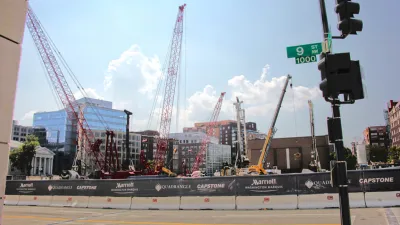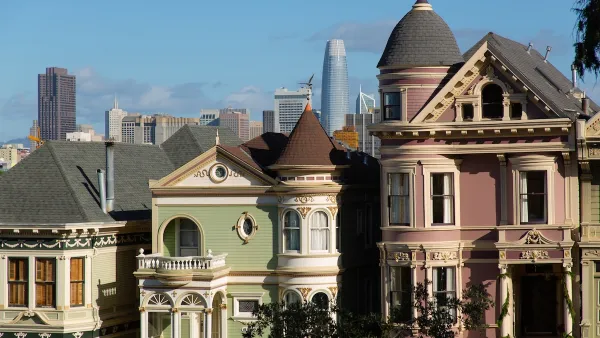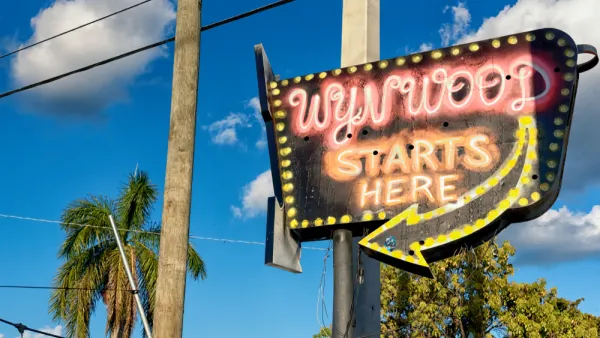Jared Green asks the billion dollar question for economic developers and planning agencies throughout the United States: is urban revitalization of neighborhoods possible without the subsequent gentrification and displacement of current residents?

Jared Green asks this important question in a recent post on the American Society of Landscape Architect's blog, The Dirt. The most recent wave of "urban revitalization" that began in the 1990s to increase wealth in cities is noted by supporters as benefiting everyone, while critics are increasingly calling these initiatives gentrification. Given these disputes, Green discusses how cities can encourage growth while still providing a sense of neighborhood continuity, and how city planning departments can accommodate forces of change while respecting local communities and culture.
Green critiques Washington D.C., citing the work of Charles Hostovsky, an urban planning professor at Catholic University. Hostovsky's work centers on the speed of revitalization in the D.C. area, “[e]very neighborhood has cranes, signifying new development. There has been a corresponding shift in the demographics of the city. In 1970, the city was 77 percent African American. Today, it’s just 49 percent... Indeed: in the past decade, approximately 50,000 young, white Millennials have moved into the city while 35,000 African Americans have left.”
These changing demographics are stark. At a recent EcoDistricts Summit in Washington D.C., Hazel Edwards, professor of planning at Catholic University, discussed successful examples of urban revitalization from around the country that maintained local culture and minimized displacement. “Edwards said the key to revitalization without gentrification is 'bringing residents and the community to the table often and at the beginning.' This kind of public planning process requires a great investment of time and resources by city governments, but without this investment, the only result may be inequitable, developer-led urban revitalization.” In Hazel's words, “cities have to form diverse, inclusive partnerships, foster openness, and collaborate on goals and outcomes.”
FULL STORY: Is Urban Revitalization Without Gentrification Possible?

Analysis: Cybertruck Fatality Rate Far Exceeds That of Ford Pinto
The Tesla Cybertruck was recalled seven times last year.

National Parks Layoffs Will Cause Communities to Lose Billions
Thousands of essential park workers were laid off this week, just before the busy spring break season.

Retro-silient?: America’s First “Eco-burb,” The Woodlands Turns 50
A master-planned community north of Houston offers lessons on green infrastructure and resilient design, but falls short of its founder’s lofty affordability and walkability goals.

Test News Post 1
This is a summary

Analysis: Cybertruck Fatality Rate Far Exceeds That of Ford Pinto
The Tesla Cybertruck was recalled seven times last year.

Test News Headline 46
Test for the image on the front page.
Urban Design for Planners 1: Software Tools
This six-course series explores essential urban design concepts using open source software and equips planners with the tools they need to participate fully in the urban design process.
Planning for Universal Design
Learn the tools for implementing Universal Design in planning regulations.
EMC Planning Group, Inc.
Planetizen
Planetizen
Mpact (formerly Rail~Volution)
Great Falls Development Authority, Inc.
HUDs Office of Policy Development and Research
NYU Wagner Graduate School of Public Service




























